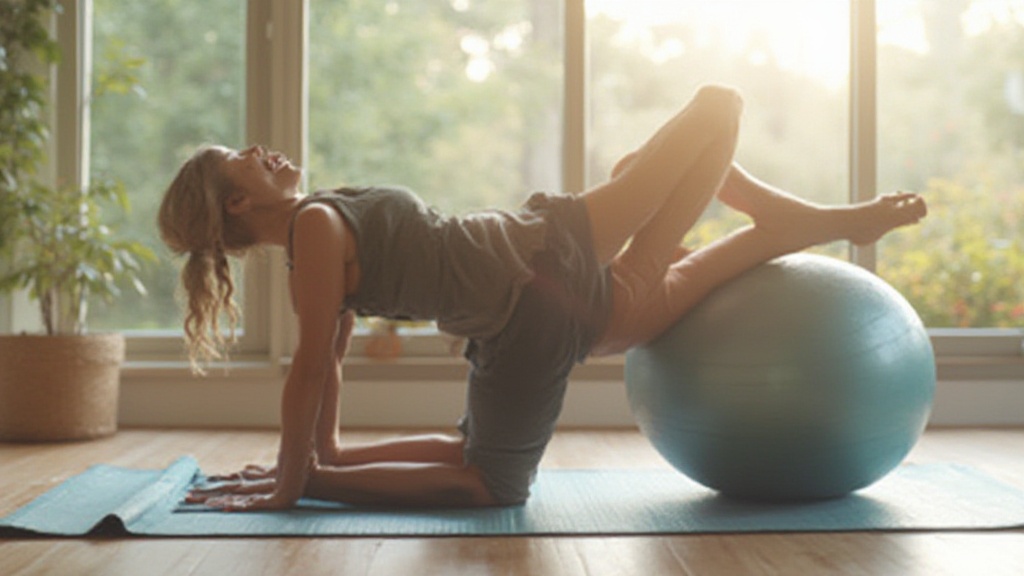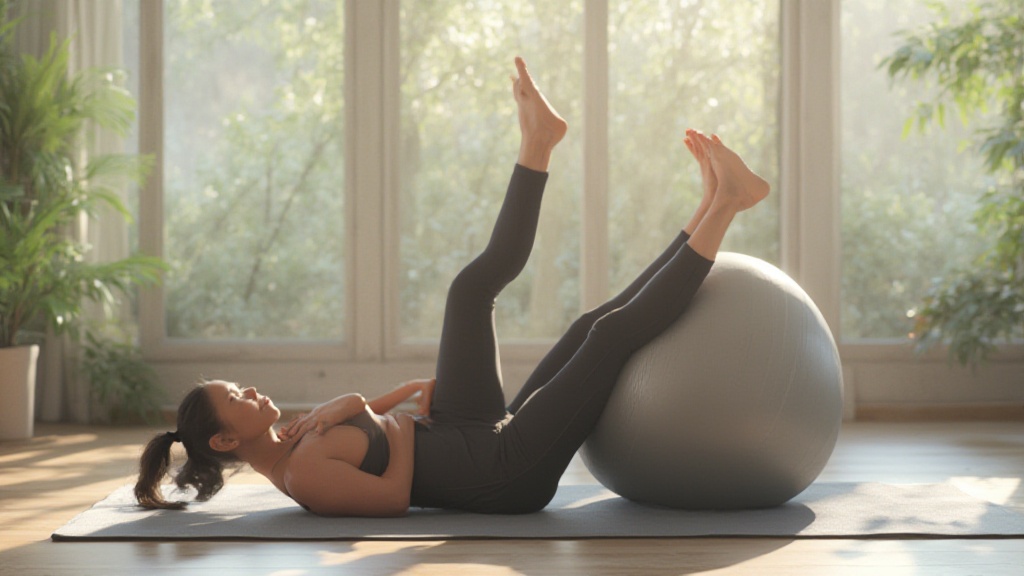
Core stabilisation exercises serve a fundamental purpose in enhancing physical fitness by developing core strength and stability. These targeted workouts fortify abdominal muscles, ensuring better balance and support during various activities.
Engaging in core conditioning leads to improved posture and is instrumental in injury prevention.
Integrating these exercises into a fitness routine boosts overall endurance and athletic performance while facilitating functional movements in daily life.
The following sections will explore the advantages of core strength and suggest effective exercises for both beginners and experienced athletes.
Core Strength Benefits
Highlighting core strength benefits reveals its significant impact on overall fitness. A strong core enhances athletic performance, supporting various fitness levels across different workout routines and sports.
Core strength translates to more efficient daily activities, such as lifting and bending, ultimately leading to improved posture. For instance, engaging the core during movements provides essential spinal support and stability.
The following exercise exemplifies a foundational approach to core fitness:.
Plank Exercise
The plank is an effective exercise to strengthen the core while promoting controlled muscle engagement.
To perform this exercise:.
- Begin in a push-up position, but with your weight on your forearms and toes.
- Keep your body in a straight line from head to heels.
- Engage your core by drawing your belly button towards your spine.
- Hold this position for 20 to 30 seconds, gradually increasing the duration as your strength improves.
This exercise acts as an excellent starting point for beginners aiming to develop core durability and stability.
Conclusion
Incorporating a variety of core stabilisation exercises into one’s fitness regime can lead to enhancements in stability, flexibility, and overall functional fitness. As individuals engage in consistent training, the improvements in core strength may also facilitate better posture and reduced injury risk.

How Does Stability Improve Performance
The role of stability in enhancing athletic performance cannot be overstated. Stability facilitates joint integrity, leading to a significant reduction in the risk of injuries, particularly in high-intensity sports.
Athletes who develop strong core strength often display improved balance and posture, which directly contributes to their overall athletic performance.
Implementing a stability training routine, such as the Single-Leg Balance Exercise, can enhance proprioception and muscle engagement.
To perform this exercise, stand on one leg for 30 seconds, concentrating on maintaining your balance. You can increase the difficulty by closing your eyes or incorporating arm movements.
This practice promotes lower back stability and functional strength, both of which are essential for optimal athletic function.
Essential Flexibility For Core Stability
Flexibility significantly enhances core effectiveness, thereby improving athletic performance. Having improved flexibility allows the core muscles to achieve a greater range of motion, facilitating more powerful and efficient movements.
Incorporating a stretching routine can greatly aid in muscle recovery and overall core strength training.
Dynamic stretches, such as torso twists and side bends, performed in 10 repetitions on each side, can be particularly beneficial.
Integrating these stretches into your post-workout routine ensures the maintenance of core flexibility and helps prevent stiffness. This approach optimizes performance in future training sessions, contributing to enhanced athletic performance.
Stability and Flexibility in Athletic Performance
- Stability training reduces the risk of injuries by maintaining joint integrity.
- Core strength enhances balance and posture, directly impacting athletic performance.
- Dynamic stretching improves flexibility, leading to a greater range of motion and more efficient movements.
- Incorporating stability and flexibility exercises aids in muscle recovery and optimizes future training sessions.
Balance Training Techniques For Everyone
Integrating balance training into your daily routine is essential for enhancing overall wellness. Balance is not merely a fitness concept; it plays a significant role in performing everyday activities efficiently and safely.
Incorporate stability exercises, such as the Single Leg Stand, which involves standing on one leg for 20-30 seconds.
Switch legs to improve coordination and stability.
Gradually challenge yourself by closing your eyes or holding weights, as this will aid in developing your core strength and proprioception. Regular practice of these balance exercises can significantly enhance your daily functionality and safety, particularly as you age.
Injury Prevention Through Core Workouts
Developing a strong core constitutes an effective strategy for injury prevention, particularly for those who engage in physical activities.
A weak core can lead to poor posture, increasing the risk of injuries during various movements. Enhancing core strength supports spinal stability and overall body control.
To fortify your core, consider incorporating the following exercises into your routine:.
- Planks: Hold a plank position for 30 seconds to engage multiple muscles.
- Dead Bugs: Perform 10 repetitions to enhance coordination and stability.
- Bird-Dogs: Complete 10 repetitions on each side to promote balance and core activation.
Each exercise emphasizes controlled movements focused on core activation. Implementing this core workout helps enhance overall stability and significantly reduces the likelihood of injuries. By prioritizing core dynamics in your fitness regimen, you can achieve a safer, more effective training experience.
| Exercise | Benefits |
|---|---|
| Single Leg Stand | Improves coordination and stability |
| Planks | Engages multiple muscles for core strength |
| Dead Bugs | Enhances coordination and stability |
| Bird-Dogs | Promotes balance and core activation |
Effective Breathing Techniques For Stability
Implementing effective breathing techniques is essential for enhancing core stability. Diaphragmatic breathing plays a significant role in core activation and overall stability.
This method increases oxygen flow while engaging the abdominal muscles effectively.
To practice diaphragmatic breathing, follow these steps:.
- Find a comfortable position, either sitting or lying down.
- Place one hand on your chest and the other on your abdomen.
- Inhale deeply through your nose, allowing your diaphragm to expand and your abdomen to rise.
- Exhale slowly through your mouth, feeling your abdomen fall.
Regular practice of this breathing exercise can substantially improve stability during various physical activities, as it aids in core activation and promotes better posture.
Enhancing Athletic Performance With Core Exercises
Integrating core exercises into training routines is imperative for improving athletic performance. Strong core strength enhances agility, enabling athletes to perform controlled movements efficiently. Sports-specific core workouts are essential for maximizing functional fitness and strength. Examples of effective exercises include:
- Plank variations: These target the transverse abdominis, benefiting sports that require stability.
- Medicine ball twists: This exercise enhances rotational power, crucial for many athletic activities.
Incorporating these exercises can significantly decrease injury risks while enhancing overall sports performance. Consistent core conditioning fosters improved balance and coordination, which are fundamental for athletes striving for excellence in their respective sports.
Breathing Techniques and Core Exercises
- Diaphragmatic breathing increases oxygen intake, which can enhance physical performance and endurance.
- Studies show that core strength is linked to improved athletic performance and reduced injury rates.
- Engaging in core exercises can lead to better balance and coordination, essential for athletes in all sports.
- Regular core training can improve posture, which is crucial for optimal movement efficiency during athletic activities.
Why Is Core Activation Crucial
Core activation plays a significant role in enhancing foundational strength, which is essential for effective movement patterns. This fundamental aspect of fitness significantly influences balance and stability, contributing to overall performance.
By improving core activation, individuals can achieve better posture, which in turn minimizes the risk of injury and enhances mobility.
Incorporating core conditioning into daily routines promotes muscle engagement and can lead to improved athletic performance.
The Importance of Core Strength
The integration of core strength is vital for various activities, as it directly impacts endurance and functional fitness.
Practicing core activation techniques enhances spinal support and improves pelvis alignment, which are necessary for achieving optimal movement efficiency. Strategies for effective core activation include:
- Engaging in controlled movements during daily tasks to reinforce stability.
- Incorporating isometric holds while sitting or standing to strengthen the core.
- Utilizing breathing techniques to activate the abdominal muscles and promote proper alignment.
Incorporating Core Activation Into Daily Routines
Implementing core activation techniques into wellness routines can enhance body conditioning significantly. Simple exercises, such as balance training on a stability ball or through bodyweight exercises, can engage the core effectively. These practices lead to improved core durability and contribute to overall fitness progression. By fostering a stronger mind-muscle connection through proprioceptive training and dynamic stretches, individuals can experience enhanced performance across multiple activities.
Emphasizing core activation as part of fitness routines provides critical support for injury prevention and rehabilitation.
Integrating these core activation strategies ultimately ensures your body operates efficiently and safely in various physical activities.
Core Activation
- Core activation improves balance and stability, essential for effective movement patterns.
- Enhanced core strength contributes to better posture and reduces the risk of injuries.
- Practicing core activation techniques can lead to improved athletic performance and functional fitness.
- Engaging in core conditioning exercises fosters a stronger mind-muscle connection, promoting overall fitness progression.
